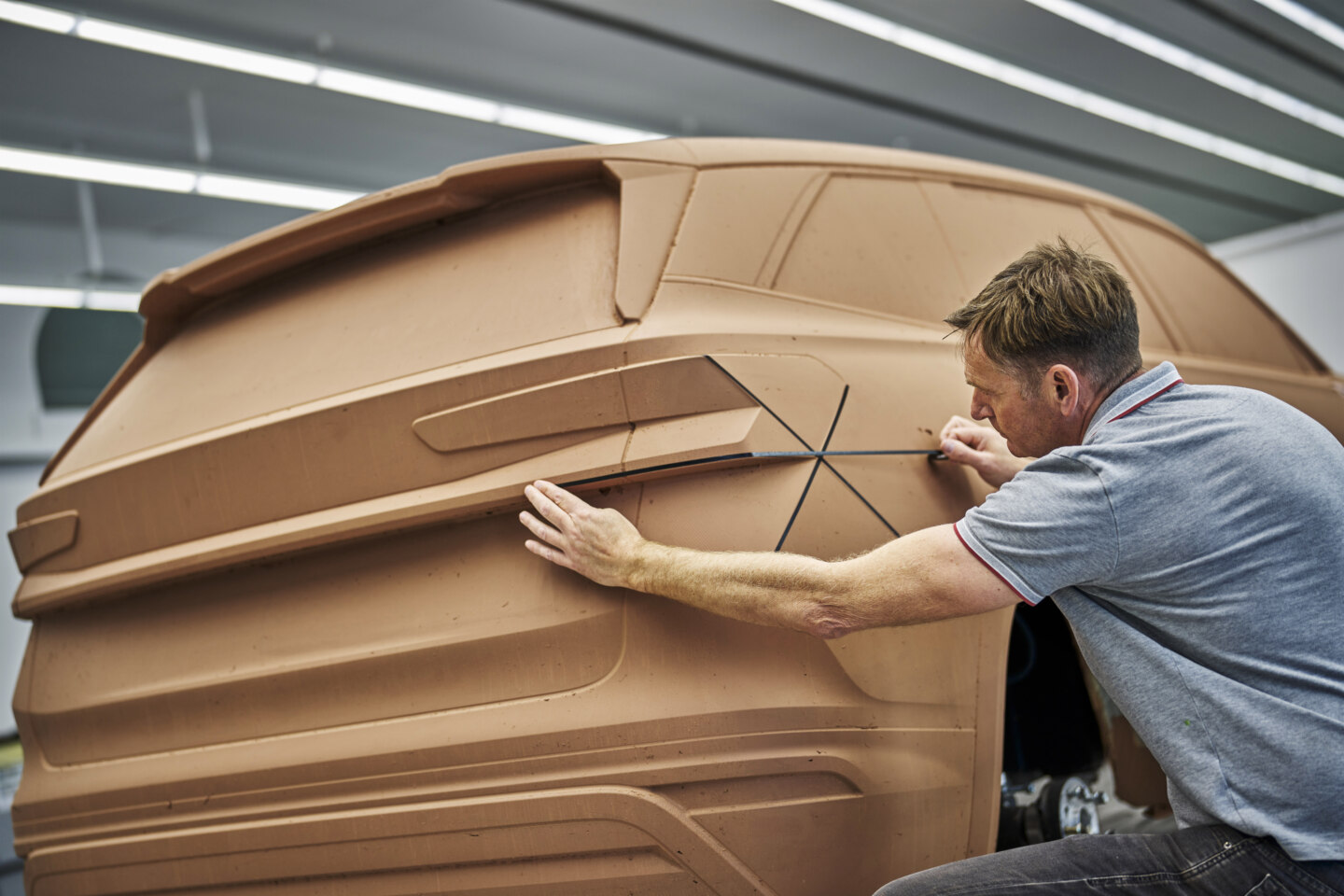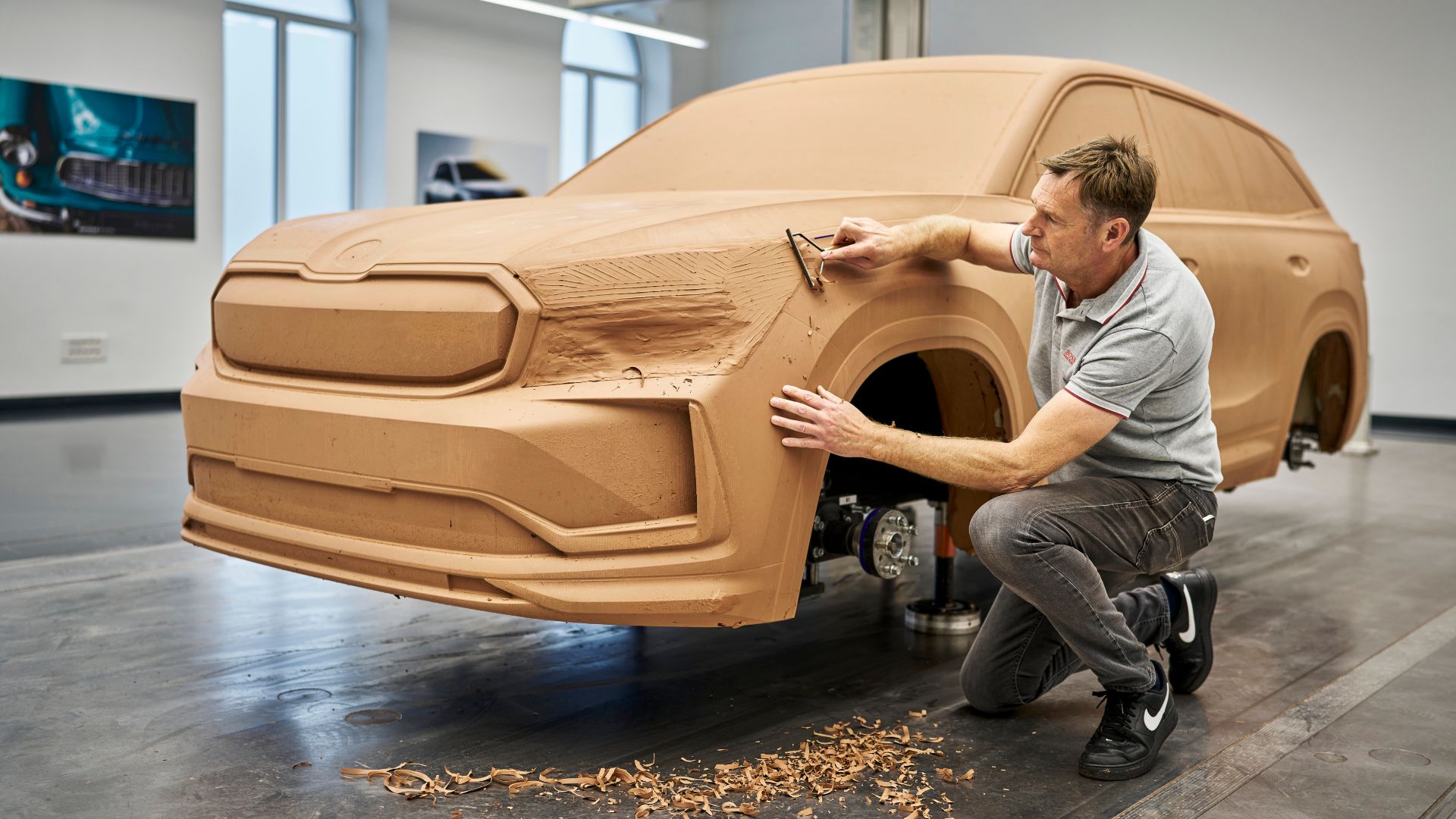This is where modelers step in, refining surfaces the machine can’t reach and giving the model its finished look. They can also make manual shape changes, ranging from subtle tweaks to major adjustments. This flexibility is one of clay’s biggest advantages—it allows for easy and relatively fast modifications. “Altering a single design detail might only take a few hours,” says Andy Settle.
Modelers use traditional hand tools: smoothing paddles, rasps, scrapers, knives, and other sharpened implements. A special rasp (Clay plane) is used to shape surfaces from below; scrapers remove clay in 5 to 30 mm layers; and flexible steel paddles of various shapes help smooth and refine large areas.
Smoothing paddles, rasps, scrapers and knives are common tools in the model shop.
Knives help refine seams and emphasize edges, often first marked out with thin adhesive tape. “The tape helps us visualize and check shapes. But in the end, our most important tools are our eyes,” Andy Settle explains. Modelers’ hands and tools are incredibly precise—they can fine-tune surfaces by shaving off the thinnest flakes of clay.
 Andy Settle controlling the lines.
Andy Settle controlling the lines.
